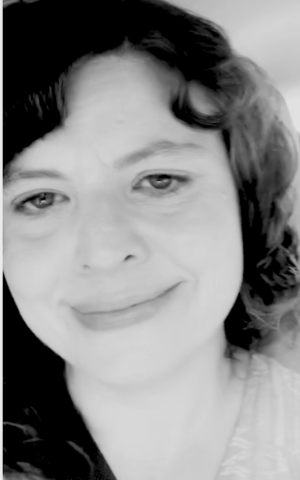
Rula Jones has been an artist since childhood. Growing up in Texas, London and Virginia, one thing stayed the same no matter where she lived: frequent trips to art museums. Now, she is the gallery director for Blackrock Center for the Arts in Germantown.
Montgomery Magazine: What was your artistic upbringing like?
Rula Jones: Art has always been around me. In London, we would take the Tube and go into the city and go to the Tate. So we always were exposed — myself and my cousins and my sister and I — to the visual arts. Growing up in Northern Virginia, the schools would take us to the Smithsonians regularly.
Eventually I moved to Manhattan for music. I actually dropped out of music and went into the visual arts. There’s so many museums there. I started going gallery hopping in Chelsea on Thursday evenings, which was all the contemporary art galleries at that time.
And I really just loved the visual arts because it’s something that you can do by yourself. But you communicate in a way that separates you from your viewers. I just love the philosophical aspects to the visual arts and how they motivate people to think or contemplate important things like the environment and civil rights.
Q: Is there a form of art that is not visual?
A: Yes. The visual arts has been very interdisciplinary; it has pushed the boundaries of what can be called visual arts. There are visual artists that are working in sound, or performance art, which is different than the performing arts.
This is one of the reasons why I decided to accept the position here at Blackrock, because, you know, the Blackrock Center for the Arts has performing arts and has the music, the ballet, dance, theater and galleries. We want to do more cross programming in the future.
We’re having an artist, and I invited a dancer friend of mine to respond to his visual art to a score of Vivaldi’s Four Seasons, she’s going to do an original choreographed work.
Like music can be sound, but also sound itself can be very visual as well, certainly in people’s imaginations.
Q: How does the art you do now allow you to express yourself?
A: I really view myself more as a catalyst for other people to express themselves and what’s important to them. As an artist, I also focus on issues that impact me.
During the pandemic, I coordinated the exhibition called “Luminaire.” Every single artist had to come up with something that could be viewed in the dark. The gallery was pitch black, and all of our works evoked some type of light. It was about finding hope. It was very dark in the pandemic.
I did pieces that were oceanic sculptures. I imagine that the deep ocean would be very calming and relaxing. I missed the ocean because we were in lockdown all summer.
Q: As gallery director, what is your vision for the galleries at Blackrock?
A: As I look to the future and what we like to refer to as our building year with both of our galleries fully open to the public again, we hope to grow our visual arts programming to its potential. This will include a highly interdisciplinary and broad programmatic vision. A vision that is artist-centered, designed for both our direct and larger communities and above all, fundamentally collaborative and inclusive.
Q: What do you think people’s misconceptions are about art today?
A: I think that a lot of people consider that where they had like, minimalist canvases — where it was all red — that that’s what’s being done today. Contemporary art is really inclusive of everything and that’s why it’s so exciting as a genre to be working as an artist today, as well as a curator, seeing the breadth of artists who are working in a variety of media. Not just media, but themes. Some are very realistic, whereas others prefer to stay in the far abstraction — and it’s all acceptable. That’s what’s so wonderful about contemporary art.




